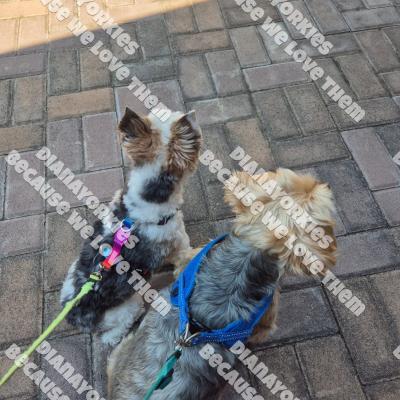As you’d expect, a normal dog poo is brown,
but what does it mean about your pet’s well-being when their poo is a different colour? We’ve created a dog poo colour chart so you can understand what to look out for in your dog’s poo and whether it indicates that you’ll need to change their diet or take them to the vet.

Brown dog poo
The healthiest dogs will produce brown coloured poos that are the consistency of playdough. These can range from light to dark brown depending on the diet that you feed them, but the colour should stay consistent each day. If your dog is regularly producing firm brown poos, this is a great sign that you’re probably feeding them the right nutrition for their circumstances.
Black dog poo
Black dog poo is typically caused by bleeding high up in the gastrointestinal tract, for example bleeding ulcers found in the stomach or small intestines. This colour of dog poo is often accompanied by a wet and sticky consistency, like tar. The dark colour of the poo means that the blood has been digested and your dog may have internal bleeding so it’s important that you immediately take your dog to your nearest vets or Animal Emergency Centre if you see them produce a black dog poo.
Red streaks of blood in dog poo
A normal brown dog poo with red streaks of blood in it indicates that your dog has blood from somewhere in their lower intestinal tract, for example in their large intestine. This is less of a cause for concern than black dog poo, however if the problem persists or your dog’s behaviour changes, take them to your Vet to diagnose where the blood is coming from.
Grey or yellow dog poo
Both grey and yellow dog poos are signs that your dog may have bile in their poo which is caused by problems in their liver, gallbladder or pancreas. Greasy, grey poos are often a sign that your dog is having difficulties absorbing nutrients, and your Greencross Vet will check for exocrine pancreatic insufficiency (EPI). With yellow dog poos, an orange-yellow shade implies biliary or pancreatic issues, while yellow mucus points towards a food intolerance to something in their diet, especially if you’ve recently changed it.
Chalky and white dog poo
Dogs producing chalky, white poos are generally being fed a diet that is too high in calcium, or they’re being fed too many bones. This type of poo is most common in dogs that are being fed a raw diet.
White spots in dog poo
If you’re finding what resembles white grains of rice or long, white strings in your dog’s poo then this is a sign that they have contracted intestinal worms. Consult your vet immediately.
By checking over your dog’s poo before you chuck it, you can compare its appearance to our dog poo colour chart and gain an insight into their internal health status.
















